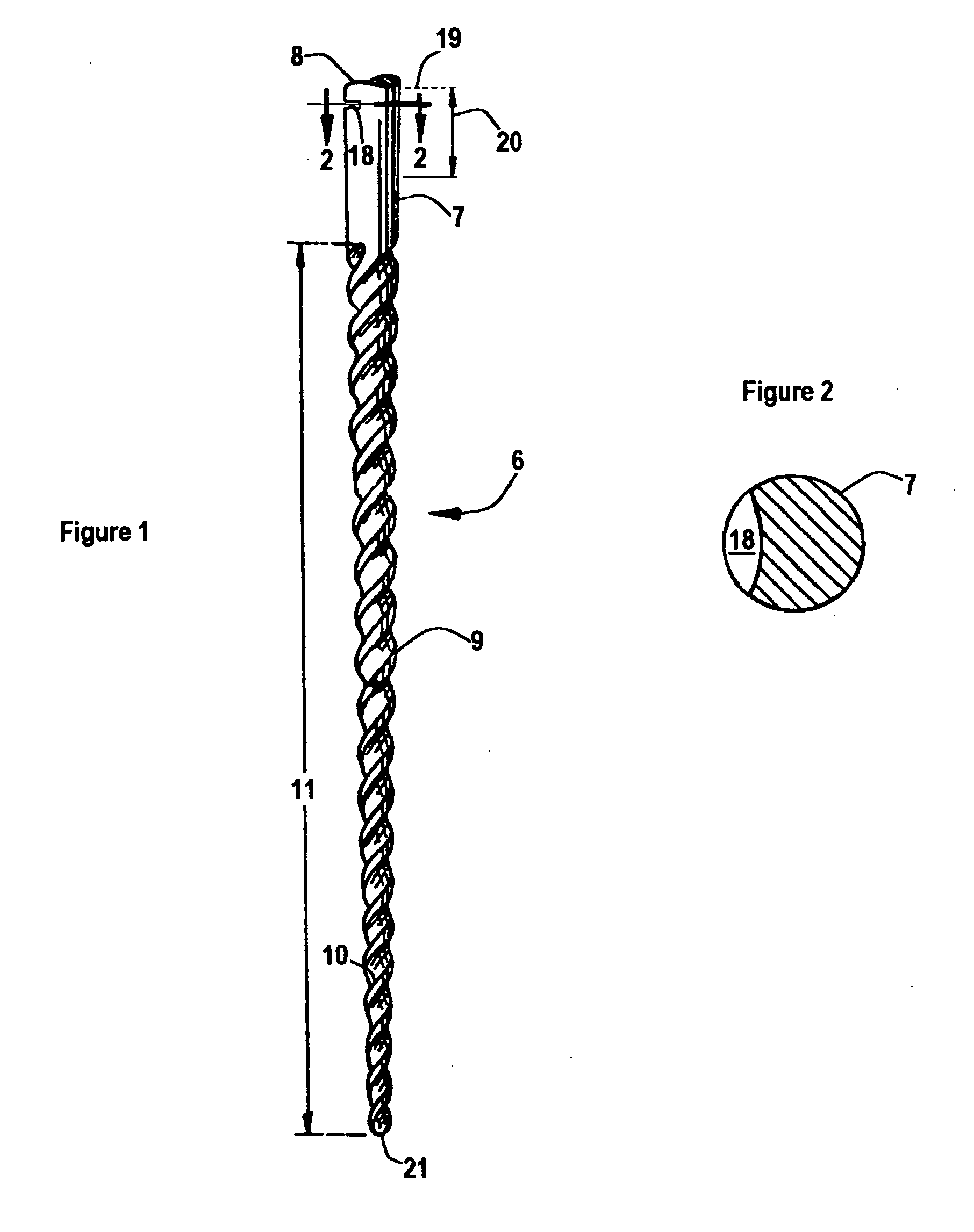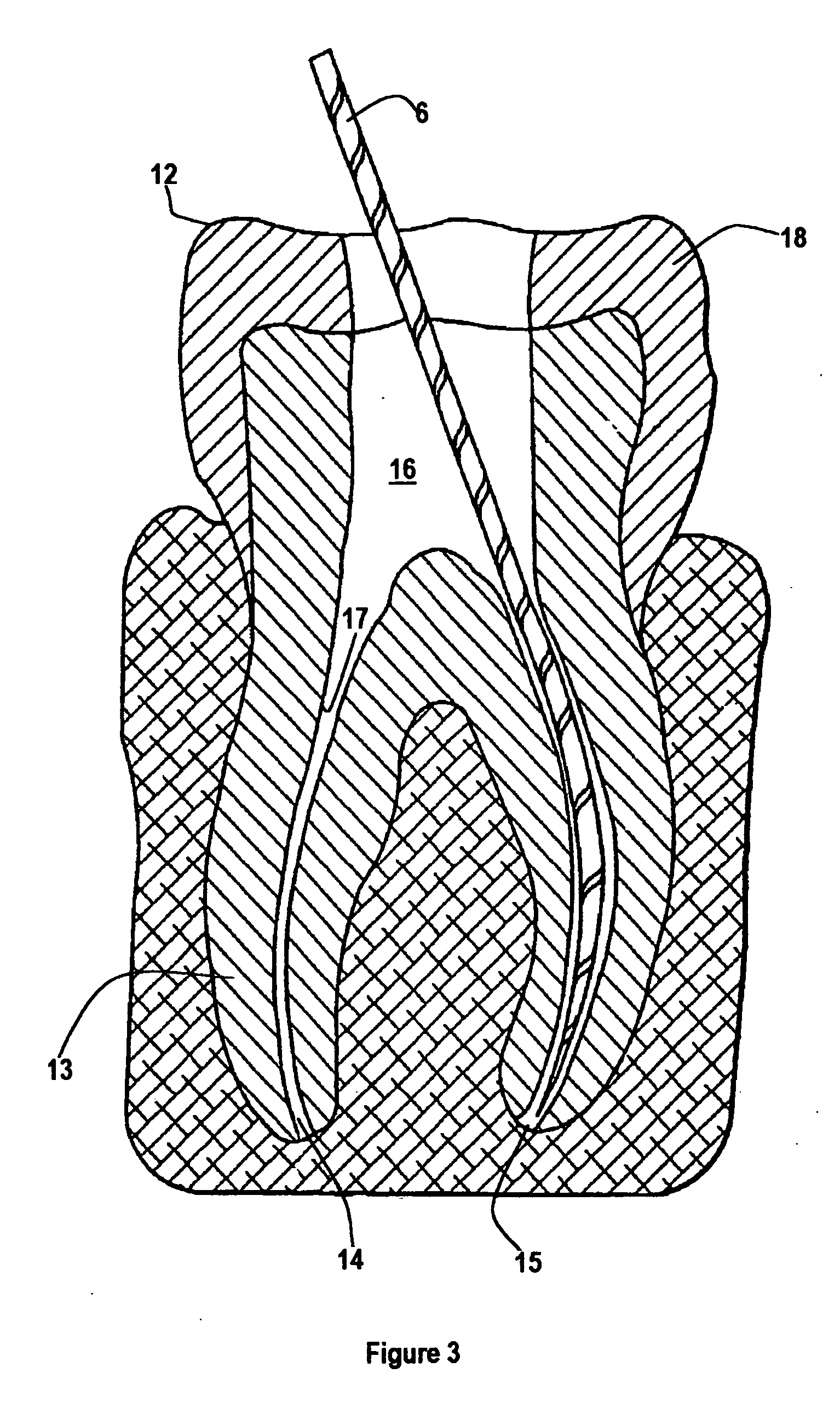Rotary dental file having a safe breakage point
a safe and rotary technology, applied in the field of endodontic components, can solve problems such as shank failure and reliability
- Summary
- Abstract
- Description
- Claims
- Application Information
AI Technical Summary
Benefits of technology
Problems solved by technology
Method used
Image
Examples
Embodiment Construction
[0015] Referring to FIG. 1, a rotary endodontic file 6 is illustrated. The file 6 is composed of a metallic material and includes an elongated tapering shank 7. The file 6 is typically fabricated from a nickel-titanium alloy known by the trade name Nitinol or by its scientific formula NiTi. Files composed of nickel-titanium possess superior flexibility, torsional and fracture resistance properties as compared to the previous industry standard stainless steel files. The upper region 8 of the shank 6 is adapted to fit within a handle designed to be directly gripped by a chuck employed by a power driven rotary tool. The lower region 9 of the file shank is formed to include some type of cutting, abrading or shaping protrusion, ridge or edge 10. The length 11 of the lower region 9 typically occupies most of the length of the tapering shank 7.
[0016] Referring also to FIG. 3, the use of the rotary file 6 can be understood by viewing the partial cross section of a tooth 12. The tooth 12 in...
PUM
 Login to View More
Login to View More Abstract
Description
Claims
Application Information
 Login to View More
Login to View More - R&D
- Intellectual Property
- Life Sciences
- Materials
- Tech Scout
- Unparalleled Data Quality
- Higher Quality Content
- 60% Fewer Hallucinations
Browse by: Latest US Patents, China's latest patents, Technical Efficacy Thesaurus, Application Domain, Technology Topic, Popular Technical Reports.
© 2025 PatSnap. All rights reserved.Legal|Privacy policy|Modern Slavery Act Transparency Statement|Sitemap|About US| Contact US: help@patsnap.com



